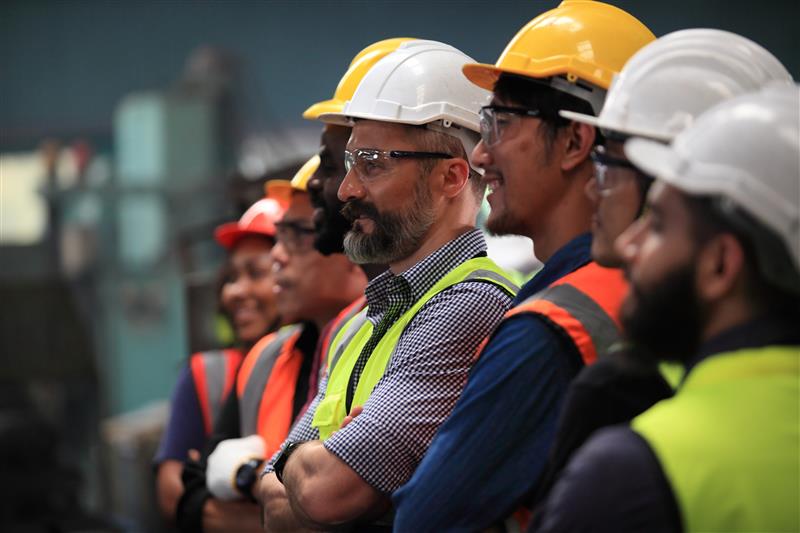A Conversation with Peter Scheman, Global Co-Head of Jefferies Industrials
The industrial sector is vast and varied. It includes makers of valves, auto parts, and rocket engines, as well as companies providing services to homeowners, businesses, municipalities, and the automotive and aerospace value chains.
The Jefferies Industrials Conference will explore this enormous landscape in New York City on September 4-5. Over 1,400 leading executives, institutional investors, private equity investors, and VCs will meet to address near- and long-term investment opportunities and discuss the trends driving industrial sectors in the U.S. and internationally.
Before the conference, we sat down with Peter Scheman, the global co-head of Jefferies Industrials, to discuss his take on the sector and what the Jefferies Industrials team is preparing for in Fall 2024 and beyond.
Q: What are the most critical macro trends shaping the industrial sector?
PS: There are several of them. Of course, interest rates are key, especially if your business touches the consumer. Then there is the adjustment of supply chains and reshoring, which have been issues for manufacturing since COVID. The elections are coming up, and there are the megatrends of climate change, the energy transition, and technological disruption, with all they imply.
Q: What are you seeing in terms of supply chains and reshoring?
PS: The supply chain issue cuts across many subsectors. After COVID, there was a general consensus—among American policymakers and business leaders—that America had to bring home critical things we were doing abroad. We needed more sustainable or reliable supply chains. This is a trend that’s going to stick.
We have already seen a dramatic rise in the construction of manufacturing facilities in the U.S. to $115 billion in 2022, a 40% increase from 2021. Manufacturing spending in July 2023 was 74% higher than in the same month in 2022.
Recent federal legislation—like the infrastructure bill, the CHIPS Act, and the Inflation Reduction Act—will also be an accelerant, and much of the spending and utilization of tax credits will occur in the years to come. Only about one-fifth of the federal funds allocated to infrastructure, energy, and climate projects through these bills have been spent. But there are enough durable, structural tailwinds propelling investments in this sector that even if the tax credits disappeared, I don’t think it would be catastrophic.
Q: What do you see for deal activity in the year ahead?
PS: We are seeing a big rebound in M&A, and it should continue to be more pronounced in all industries and subsectors in 2025. All the dozen or so industrials subsectors—whether it’s the auto aftermarket, packaging, aerospace, defense, transportation, metals, building products or anything else—are on different paths right now. However, the consistent thing is that M&A has been rebounding across all of them.
Corporate America stood up earlier this year and said, “You know we can look further into the future.” And across many sectors, we have seen a lot more strategic deals. In particular, we have seen a lot of activity around building products and building product distribution.
We expect private equity to be more active in buying and selling companies in the next year, too. But I’d say there is optimism across the board for 2025. Assuming we don’t have bad policy developments and geopolitics remain relatively stable, I think we are approaching a multiyear uptick in M&A activity.
Q: Do you think people will delay or wait to do deals until after the election?
PS: Historically, presidential elections have led to short delays in M&A deals, and the fourth quarter of an election year is generally a down quarter. An extreme example was when former President Trump was elected in 2016 and promised to lower corporate taxes. That killed the M&A deal market for longer than the fourth quarter because everybody was waiting for the tax cuts. This year, we may have an air pocket from October to December as people try to sort out the tax and regulatory implications of this election.
Q: Relative to other sectors, what makes industrials a sector that is attractive to invest in, especially for private capital?
PS: First, industrials can be a lower-multiple way of playing megatrends because some industrials are heavily exposed to and driven by these megatrends. Take electrification. Someone could invest in companies that own or develop power plants or in cheaper companies that make electrical cables.
Second, many industrials are economically sensitive, so you could use them to take advantage of a long expansion if you think we are in the early innings of one.
Third, much deal activity in industrials involves relatively small- to mid-sized companies, so they are approachable by a wide range of private equity and corporate players. There is a significant opportunity to deploy technology for efficiency and customer acquisition across the board in industrials.
Finally, industrial companies are often easier to understand than companies in, say, technology or healthcare that require investors to have a strong background and a high level of specialization. If someone is not a specialist, industrials may be an area where they can more easily or quickly get their head around a business and feel more comfortable investing.




